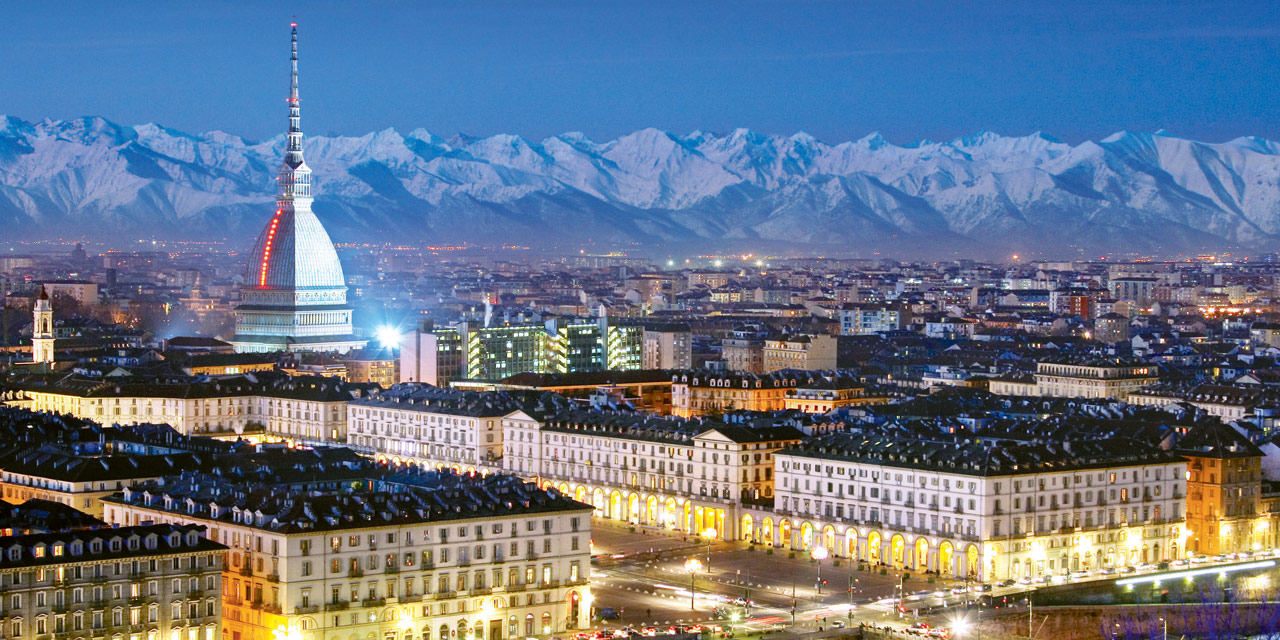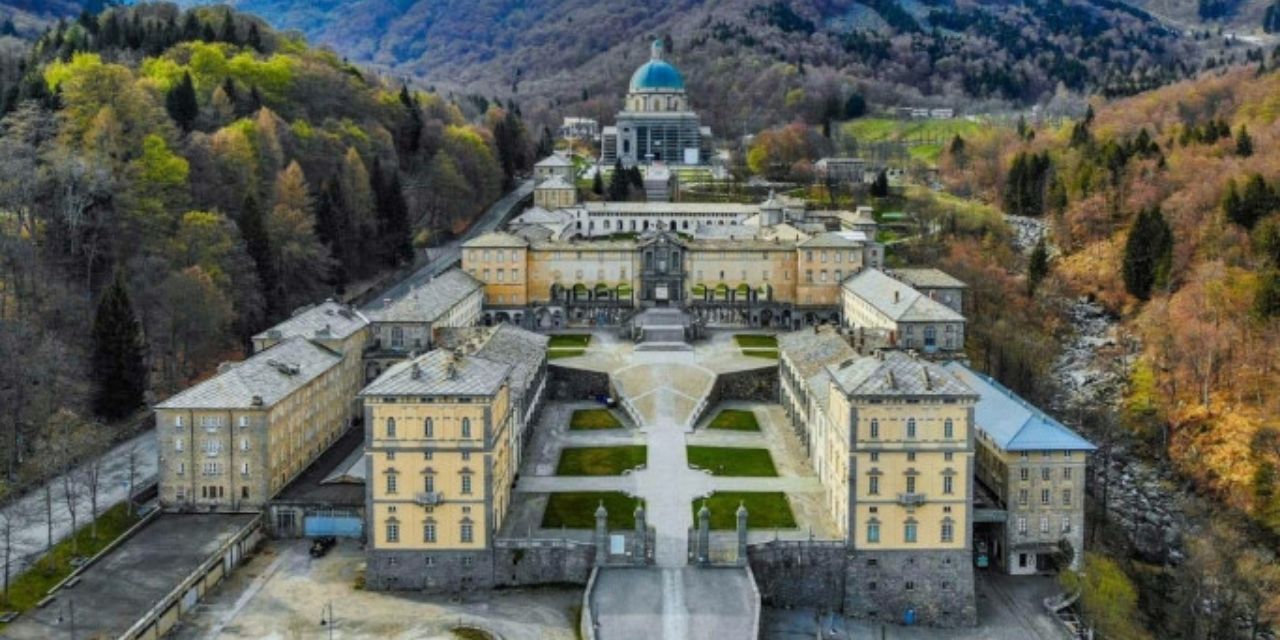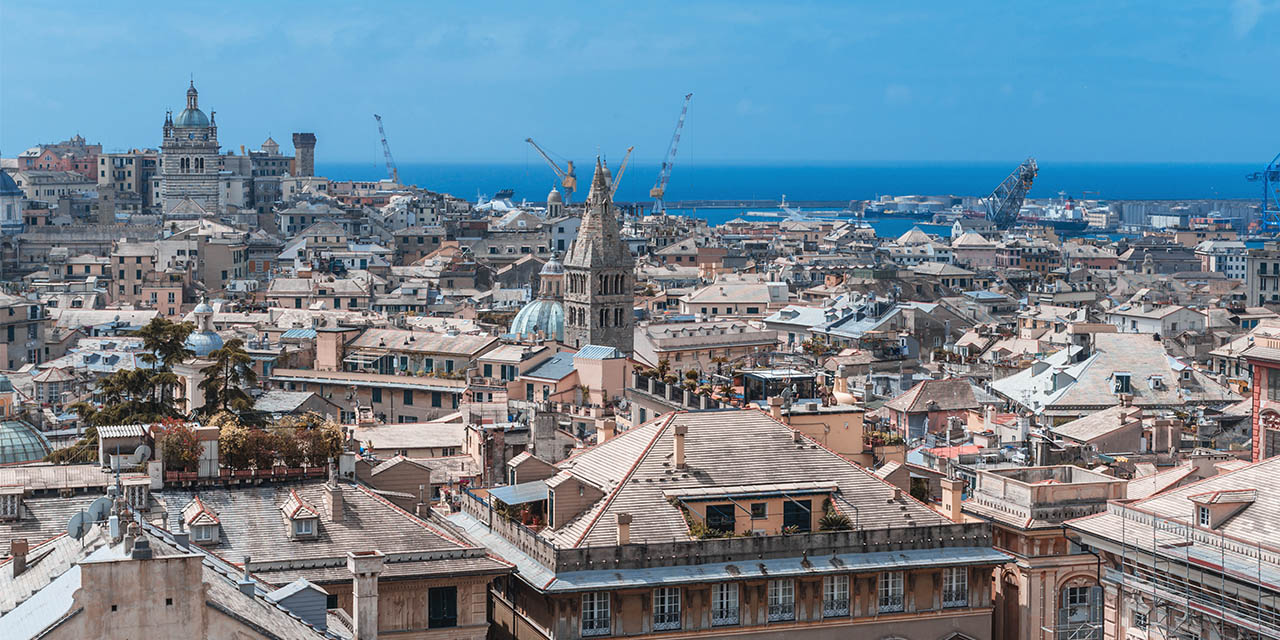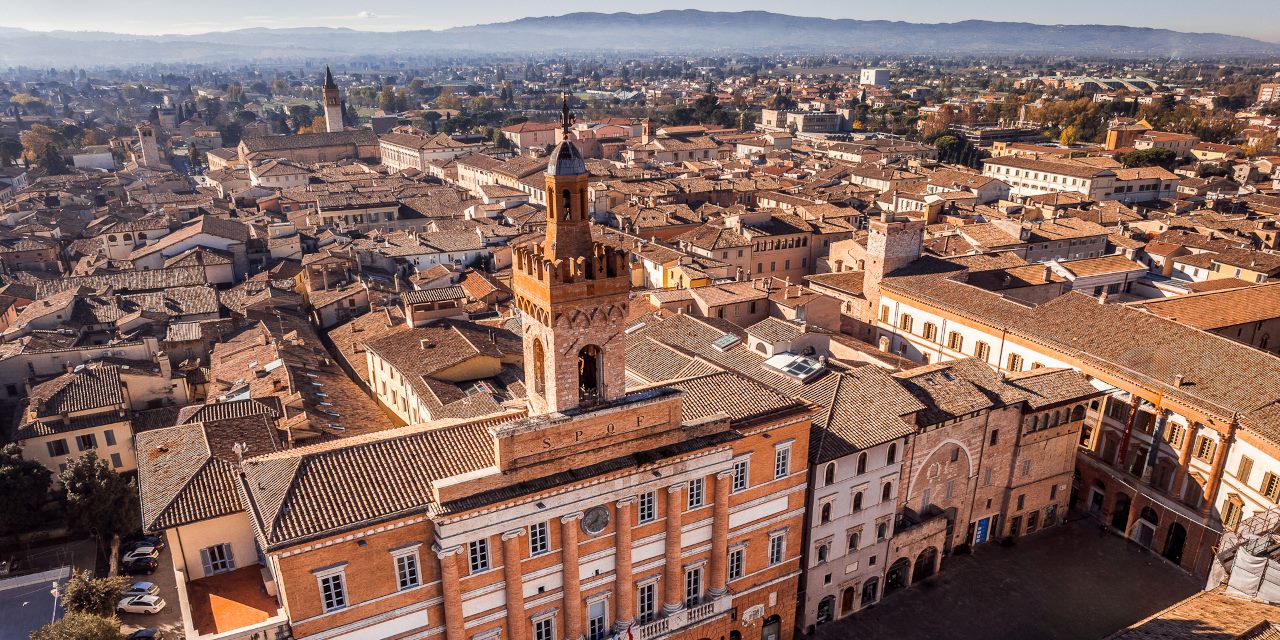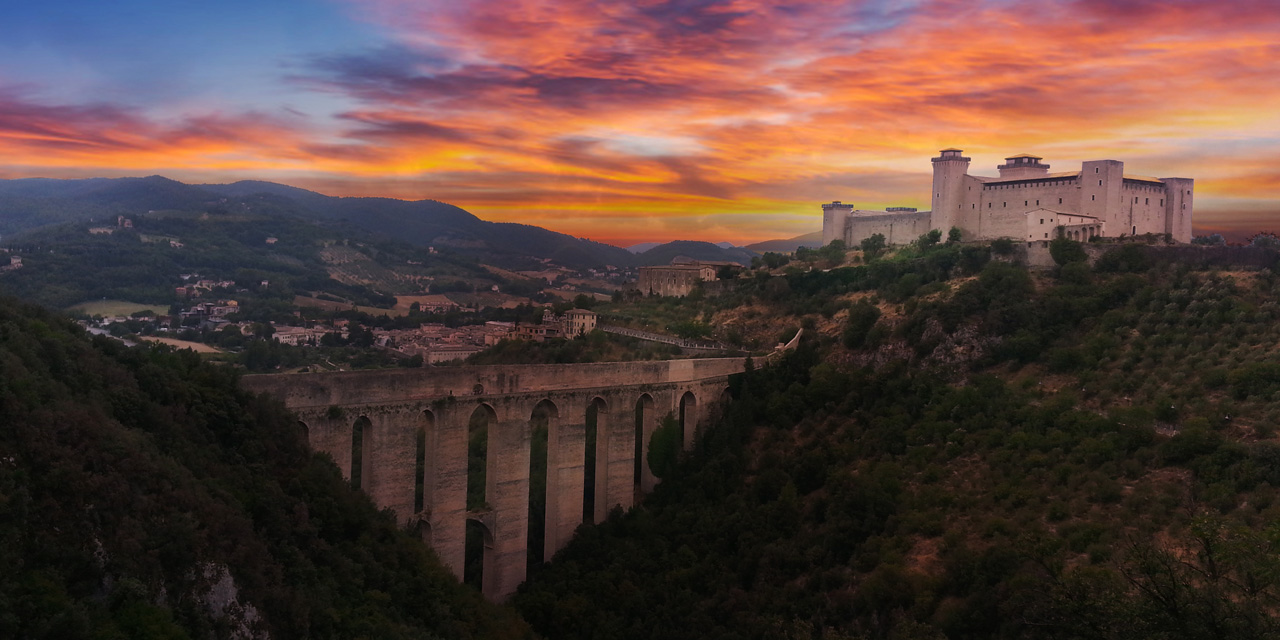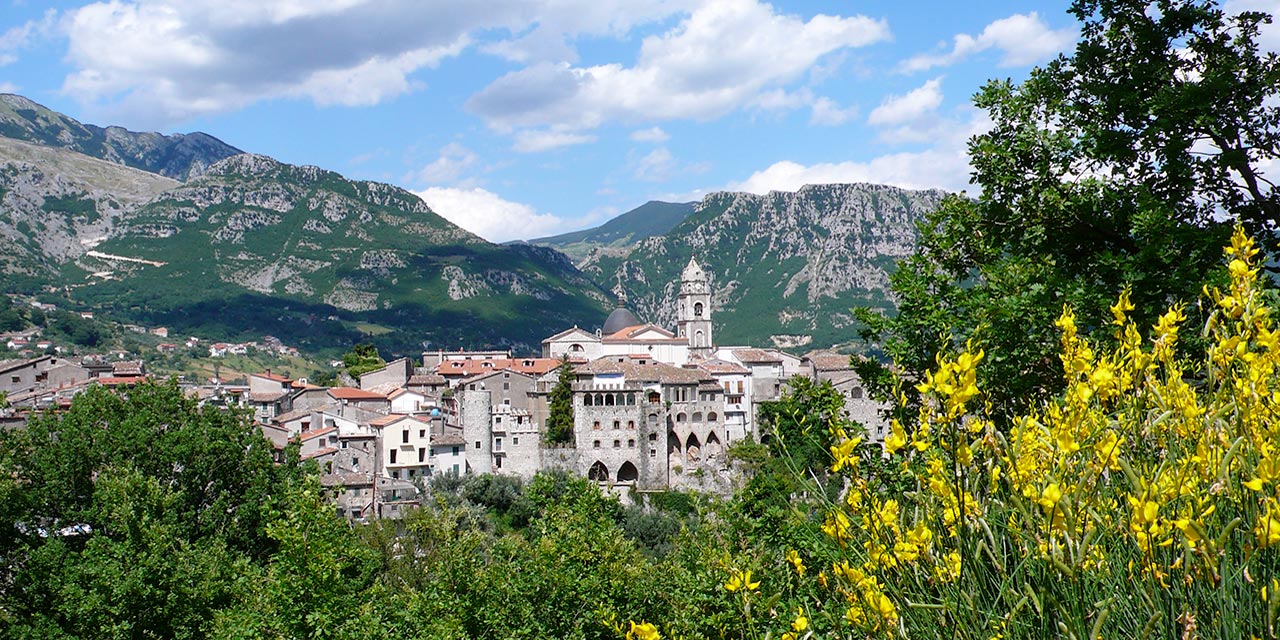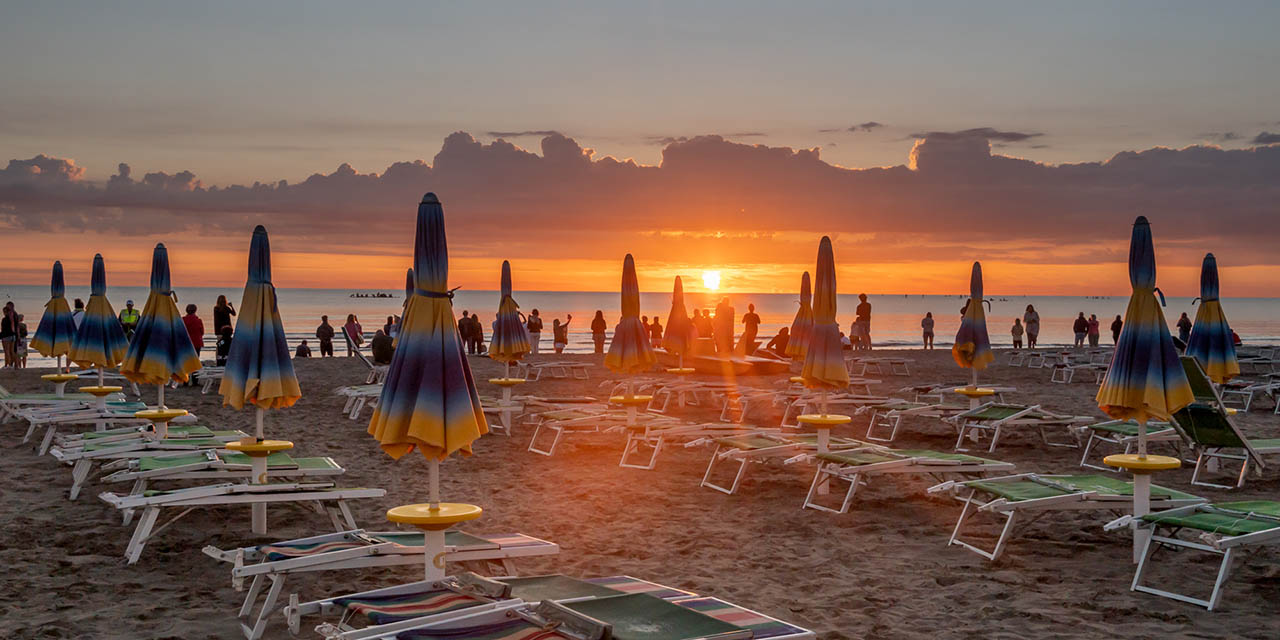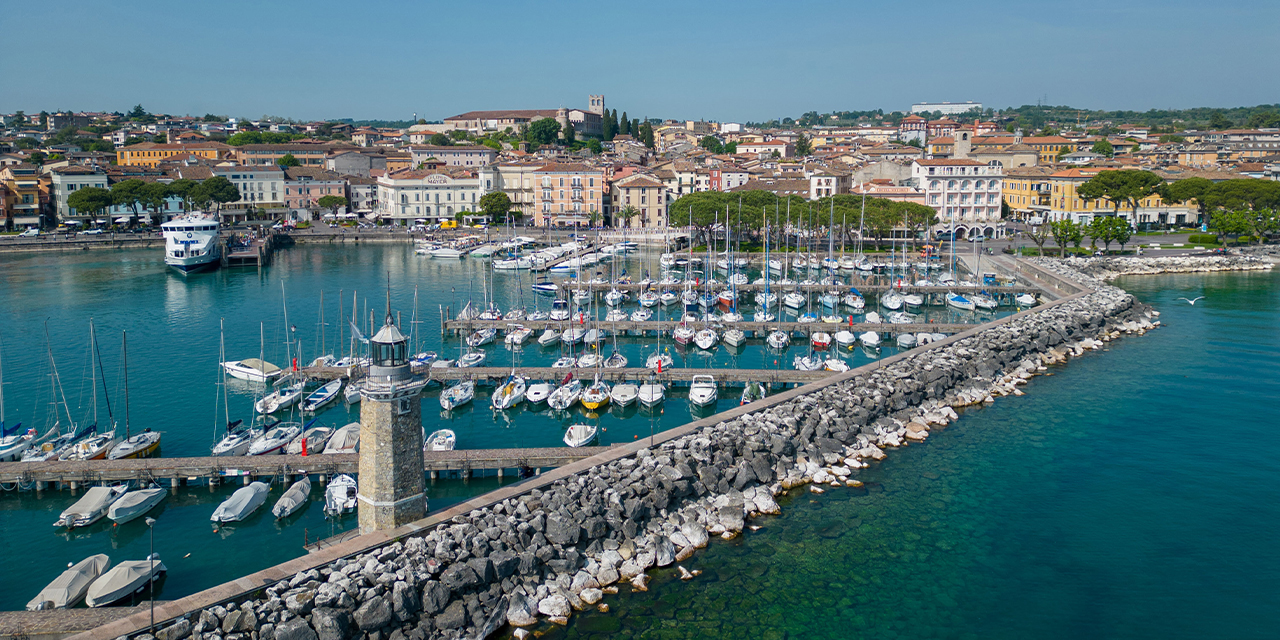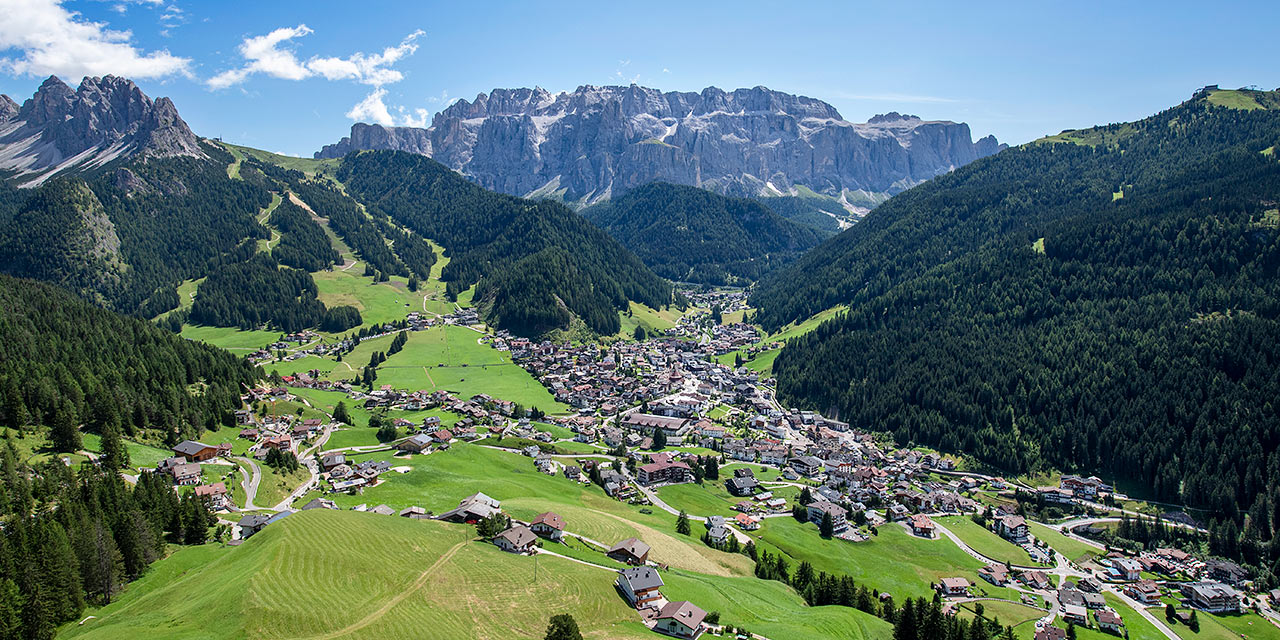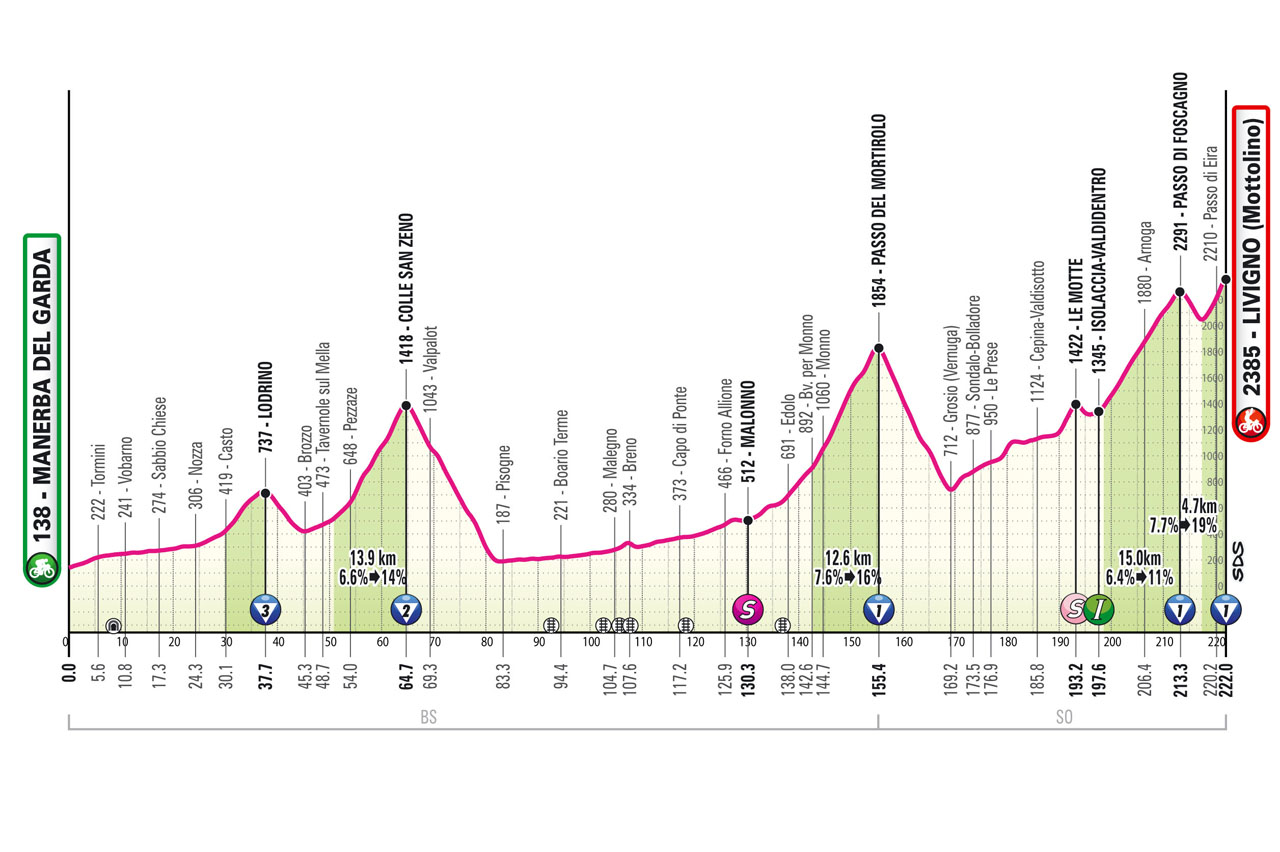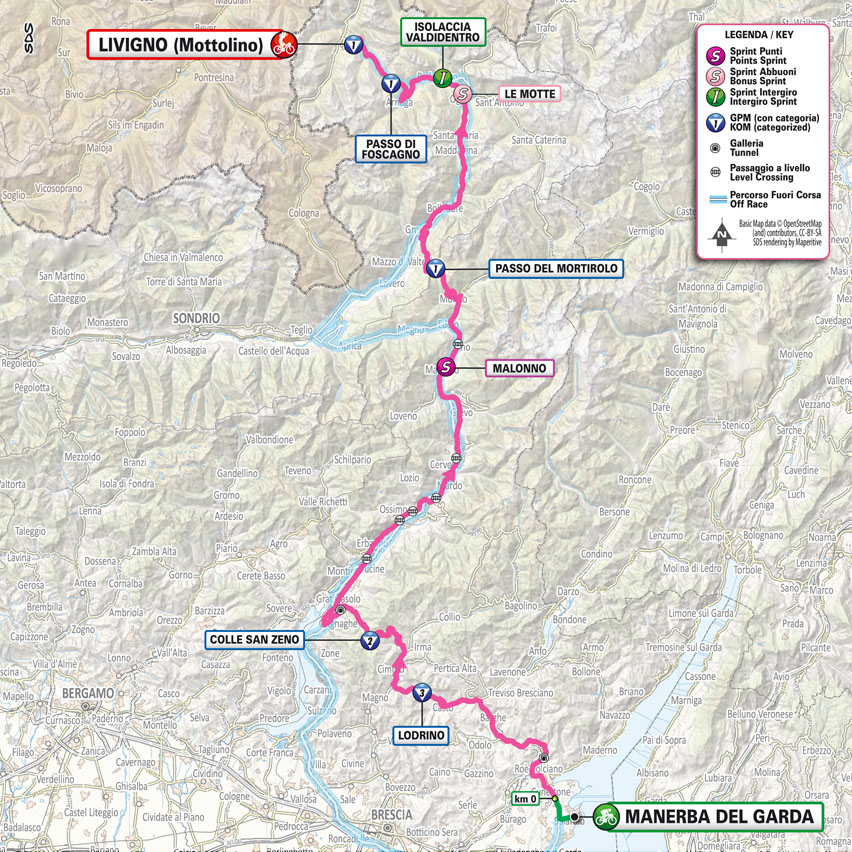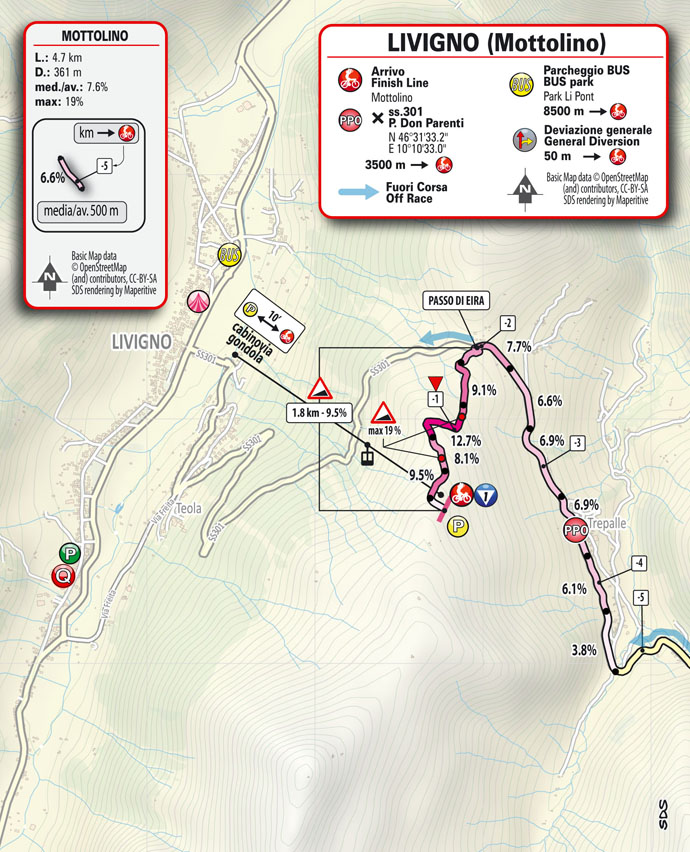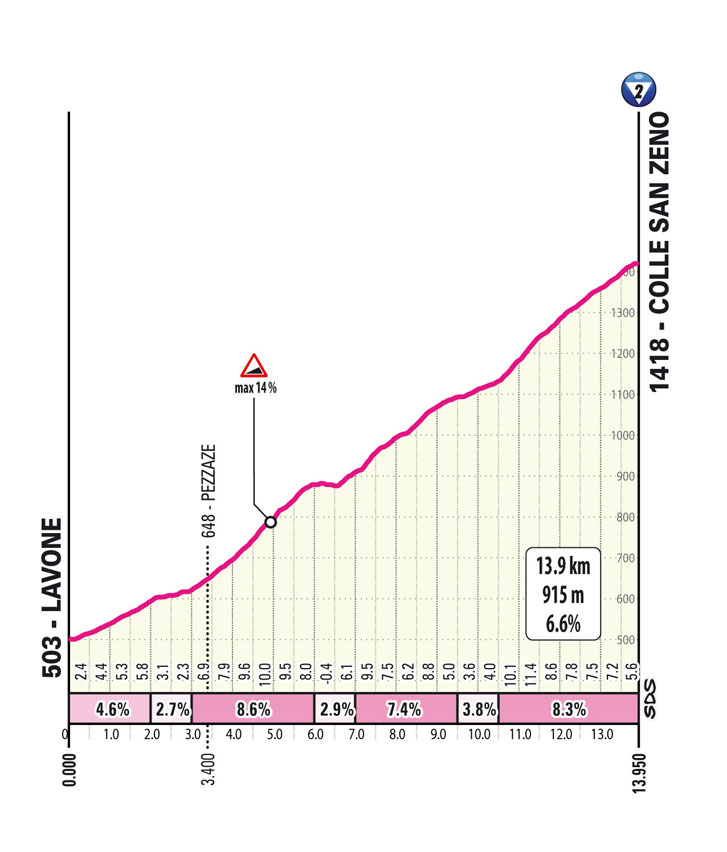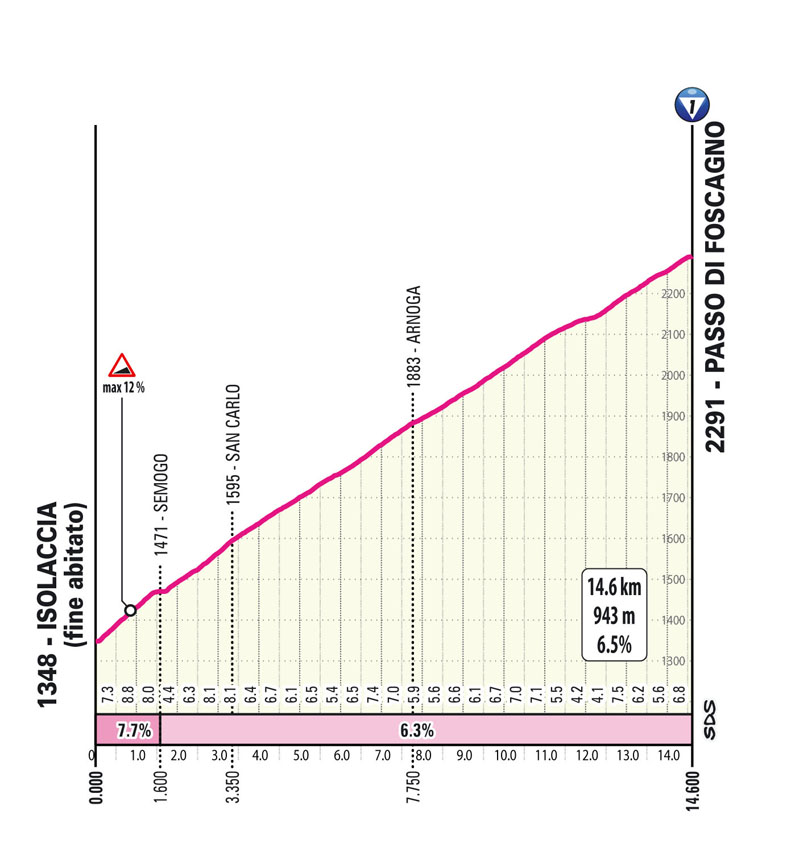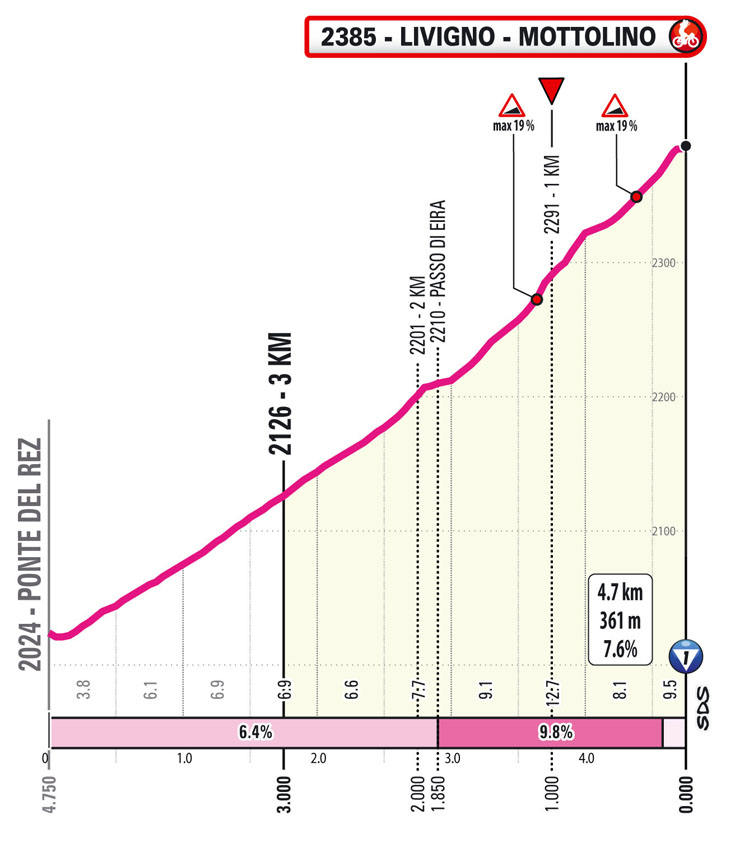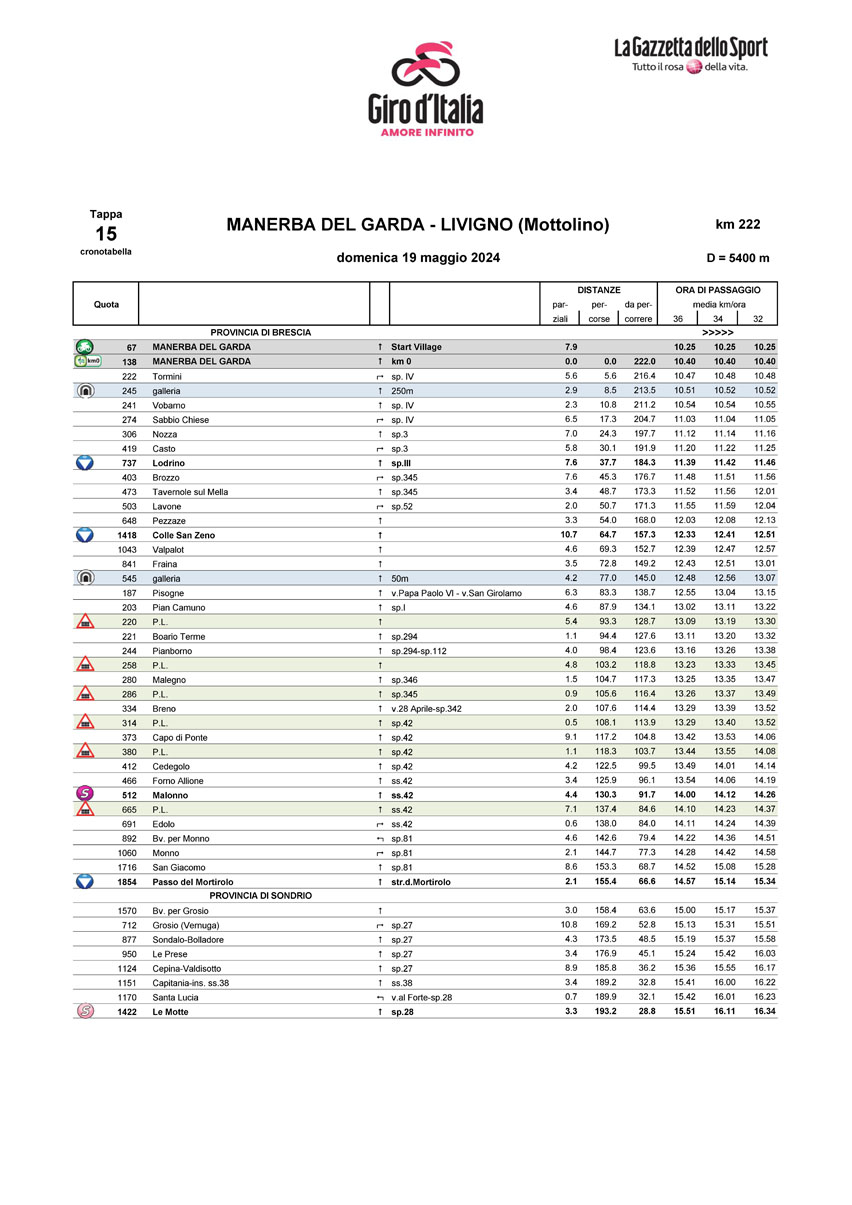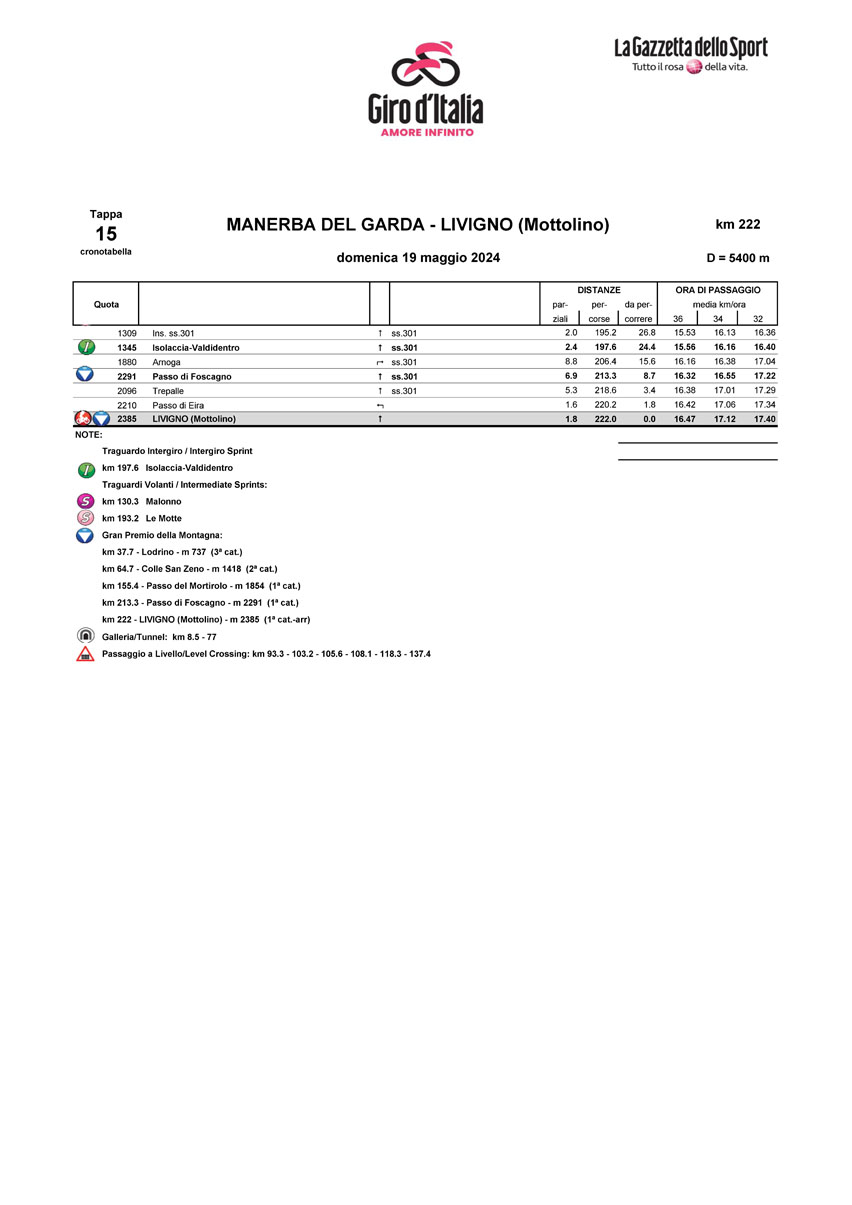profile
map
technical info
Stage 15, arguably the hardest of the entire Giro, sees the start of a tough week of mountains. The route from Manerba del Garda to Livigno amounts to 220 kilometres and takes in an elevation gain of 5,700 metres. The road climbs at shallow gradients to Casto, where Colle San Zeno, the first climb of the day, kicks in with its 13.8km at 6.6% average gradient. This is followed by a short descent before the riders climb steadily up the Camonica Valley to pass Aprica. To round off an extremely tough stage, the riders will face the Passo d’Eira which with the last 2km climbing up the Mottolino ski slope.
Last kilometres
The last kilometres are uphill. The gradient changes drastically with 2 km to go, after the Eira Pass, where the average gradient remains above 10% although the road has steep ramps interspersed with short, less steep sections. In the last km, the final ramp has gradients of up to 19% followed by a brief, less demanding part and a further “step” that leads to the final 50m straight.
start / finish
climb detail
final kilometres
itinerary timetable
tourist info
Host city:
Manerba del Garda
Overview
Manerba del Garda is located in the province of Brescia, on the Lombard shore of Lake Garda, and is immersed in the green morainic hills of the Valtenesi. The interior offers gorgeous agricultural estates where the memorable Garda olive oil and D.O.C. (literally Controlled Designation of Origin) wines are produced, as well as horse riding activities, shady trattorias with simple Mediterranean cuisine and beautiful golf courses.
Local Cusine
Typical dishes include Tagliolini al Coregone, Pike with polenta, Perch fillets, olive oil and the ever-present Spiedo Bresciano, while wines include Rosa Valtenesi and Rosso Valtenesi.
Points of Interest
The entire Manerba territory is a treasure trove of surprises spread between the picturesque Lake Garda coastline and the hilly hinterland, with the Riserva Naturale Orientata and the Parco Lacuale della Rocca e del Sasso as its flagship. Established in 2016 over an area of about 100 hectares, this is the first lake reserve in Italy, and is dedicated to the utmost protection of nature and archaeology.
An unmistakable landmark of the Garda coastline and an unmissable vantage point for tourists, the Rocca di Manerba dominates a high rocky spur overhanging the lake. Evidence of settlements dating back to the Bronze Age and the ruins of a medieval castle are preserved here. A short distance away, in the waters of San Sivino, are the remains of a pile-dwelling village, declared a UNESCO World Heritage Site and dating back to 2000 b.C.
Manerba boasts around 9 km of family-friendly coastline and the enchanting Island of San Biagio, also known as the Island of Rabbits, with lush vegetation and crystal-clear waters. At certain times of the year, when Garda water levels are lower, the island can also be reached on foot via a strip of seabed that connects it to the mainland.
Livigno (Mottolino)
Overview
A valley more than 22 km long at an altitude of 1,816 metres: here lies Livigno (whose name probably derives from the late Latin word labineus, namely “place subject to avalanches”): a true mountain paradise, both in summer and winter, protected by the Italian Alps. A destination chosen by Italians and international tourists to spend their holidays in pursuit of fun, sport, relaxation and good food.
Local Cusine
The so-called Little Tibet offers a wide selection of bars and restaurants throughout the streets of the pedestrianised centre, as well as alpine huts and inns located in the surrounding valley. The fil rouge of Livigno’s food and wine offer is the quality of the products and the genuineness of the raw materials, meticulously chosen by the chefs to create unique dishes telling the story and traditions of Livigno.
Points of Interest
MUS! Livigno and Trepalle Museum: located in an old Livigno home, this museum aims to promote culture and tradition, documenting local history and offering educational workshops and events not to be missed.
Trepalle: Trepalle is the highest inhabited village in Europe (at 2,069 metres). Connected to Livigno both by a road and a panoramic path running through Val Tort, it has a special history intertwined with that of Don Alessandro Parenti, a parish priest with an energetic and innovative spirit who left an indelible mark on the history of the village and the entire Valtellina. The figure of Don Alessandro Parenti is said to have inspired the writer Giovannino Guareschi, who visited Trepalle in the summer of 1948 and met the priest on this occasion. Guareschi was very impressed both by the village – an ideal destination for those who want to live outside the city context and be completely surrounded by nature – and by the parish priest.











